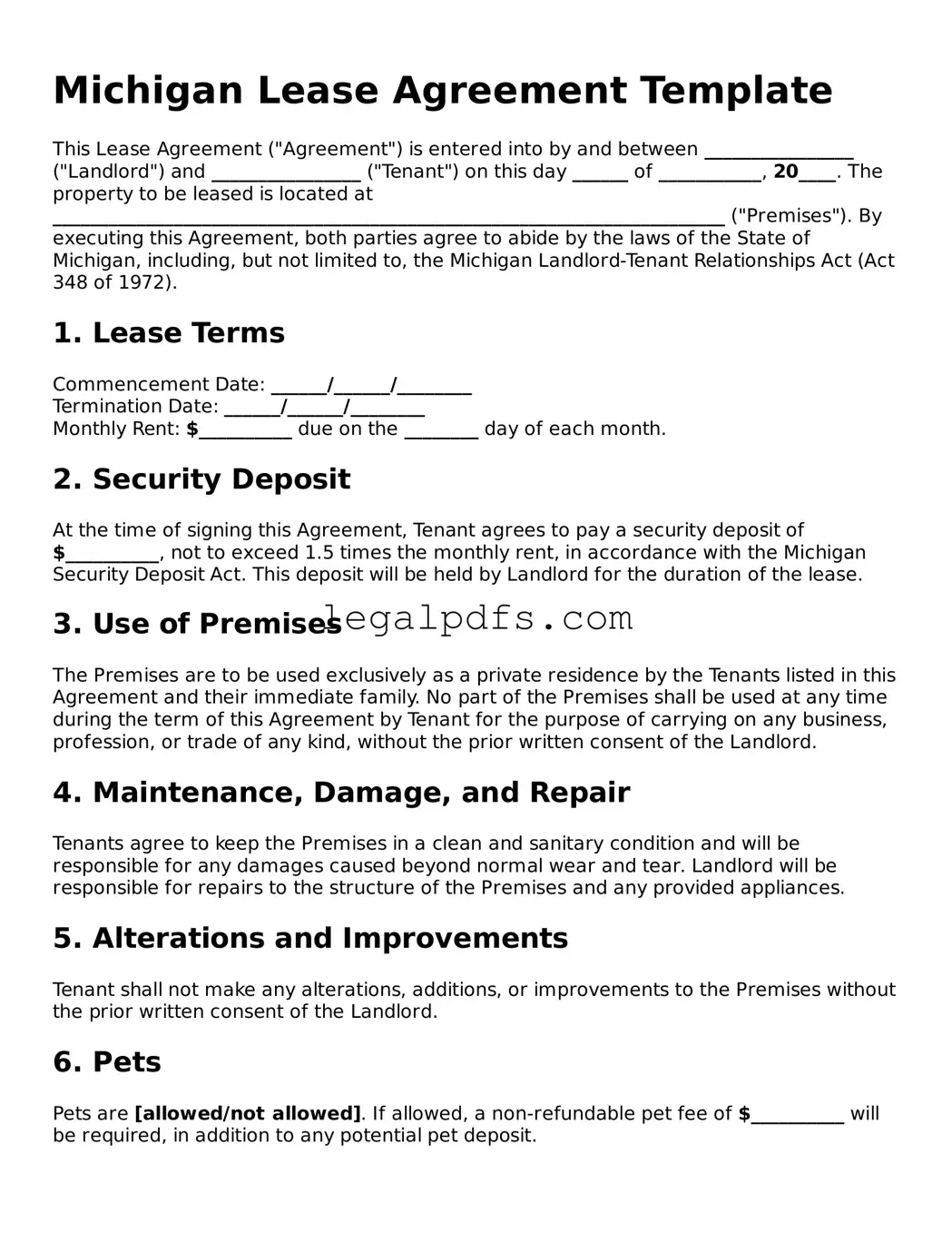Michigan Lease Agreement Template
This Lease Agreement ("Agreement") is entered into by and between ________________ ("Landlord") and ________________ ("Tenant") on this day ______ of ___________, 20____. The property to be leased is located at ________________________________________________________________________ ("Premises"). By executing this Agreement, both parties agree to abide by the laws of the State of Michigan, including, but not limited to, the Michigan Landlord-Tenant Relationships Act (Act 348 of 1972).
1. Lease Terms
Commencement Date: ______/______/________
Termination Date: ______/______/________
Monthly Rent: $__________ due on the ________ day of each month.
2. Security Deposit
At the time of signing this Agreement, Tenant agrees to pay a security deposit of $__________, not to exceed 1.5 times the monthly rent, in accordance with the Michigan Security Deposit Act. This deposit will be held by Landlord for the duration of the lease.
3. Use of Premises
The Premises are to be used exclusively as a private residence by the Tenants listed in this Agreement and their immediate family. No part of the Premises shall be used at any time during the term of this Agreement by Tenant for the purpose of carrying on any business, profession, or trade of any kind, without the prior written consent of the Landlord.
4. Maintenance, Damage, and Repair
Tenants agree to keep the Premises in a clean and sanitary condition and will be responsible for any damages caused beyond normal wear and tear. Landlord will be responsible for repairs to the structure of the Premises and any provided appliances.
5. Alterations and Improvements
Tenant shall not make any alterations, additions, or improvements to the Premises without the prior written consent of the Landlord.
6. Pets
Pets are [allowed/not allowed]. If allowed, a non-refundable pet fee of $__________ will be required, in addition to any potential pet deposit.
7. Governing Law
This Agreement shall be governed by, construed, and enforced in accordance with the laws of the State of Michigan.
8. Additional Terms and Conditions
__________________________________________________________________________
__________________________________________________________________________
IN WITNESS WHEREOF, the parties have executed this Lease Agreement on the date first above written.
Landlord Signature: _________________________________
Date: __________
Tenant Signature: _________________________________
Date: __________
